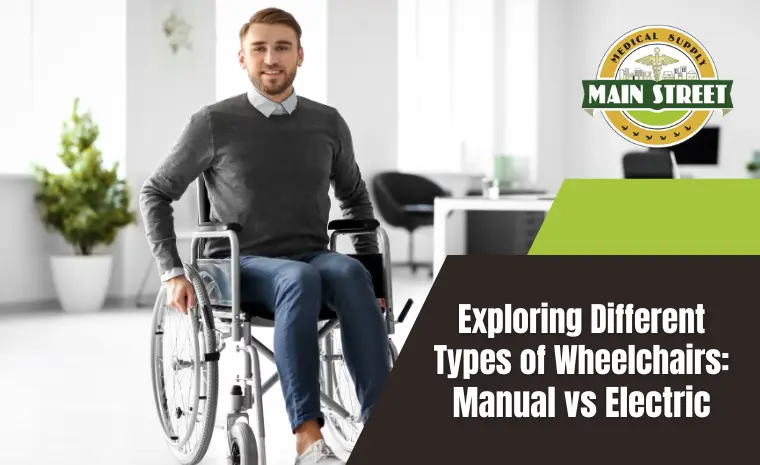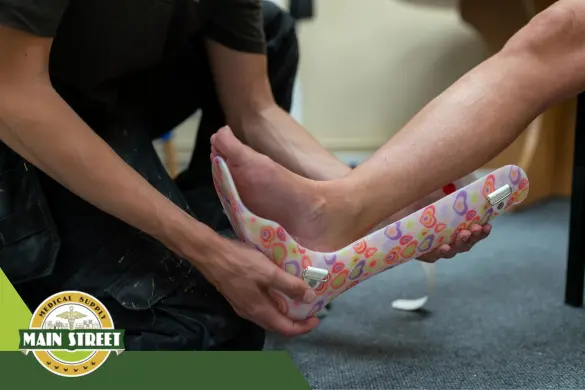
Wheelchairs have evolved significantly over the years, revolutionizing the mobility and independence of individuals with physical limitations. From rudimentary designs to sophisticated models, the wheelchair has become an indispensable tool in enhancing the quality of life for millions worldwide. As you navigate the realm of mobility aids, understanding the distinctions between manual and electric wheelchairs is crucial in making an informed decision that aligns with your unique needs or those of your loved ones.
A manual wheelchair, propelled by the user’s physical effort, has long been the standard choice for many individuals. They offer versatility, simplicity, and affordability, making them a popular option for those with sufficient upper body strength and mobility. Conversely, electric wheelchairs, powered by battery-operated motors, provide a convenient alternative, offering enhanced mobility and reduced physical strain for users with limited strength or endurance.
In this article, we will dig deep into the differences between both types of wheelchairs, exploring their respective features, benefits, and considerations. Whether you’re seeking a new mobility solution or advising patients on suitable options, this guide aims to equip you with the knowledge to make informed decisions and enhance the mobility and quality of life of individuals with physical limitations.
Manual Wheelchair
Both types of wheelchairs offer different experiences. Standard wheelchairs are mobility aids designed to be propelled by the user’s physical effort, typically through the use of hand rims attached to the wheels. These wheelchairs offer individuals with physical limitations the ability to move independently and engage in daily activities with greater ease.
Operating a manual wheelchair involves pushing the hand rims of the wheels forward or backward, allowing users to navigate their surroundings with control and precision. They are often foldable and lightweight wheelchairs, making them highly portable and easy to transport in a wide variety of settings. However, there are some pros and cons to consider with these wheelchairs:
Benefits
- Cost-effectiveness: Manual chairs are generally more affordable than electric models, making them accessible to a wider range of individuals.
- Portability: Lightweight frame construction and collapsible designs enable easy transportation in cars, buses, or airplanes, promoting greater independence and mobility in diverse environments.
- Physical Fitness: Propelling oneself forward in a basic wheelchair provides cardiovascular benefits and strengthens upper body muscles, contributing to overall physical fitness and well-being.
Drawbacks
- Physical Effort: Continuous manual propulsion requires physical effort, which can be tiring and may limit users with reduced strength or endurance.
- Limitations in Maneuverability: Manual wheelchairs may struggle with maneuverability over rough terrain or uneven surfaces, posing challenges in outdoor environments or non-accessible areas.
Electric Wheelchair
Electric wheelchairs, also known as power wheelchairs, are mobility devices equipped with battery-operated motors that provide automated propulsion. These transport chairs offer individuals with physical limitations a range of options for convenient and efficient mobility.
An electric wheelchair is operated through joystick controllers or other alternative control mechanisms, allowing users to navigate effortlessly with minimal physical exertion. They are often equipped with features, such as adjustable seating, tilt-in-space functions, and customizable controls to accommodate various needs and preferences.
Benefits
- Ease of Use: The electric wheelchair requires minimal physical effort to operate, making it suitable for individuals with limited strength or stamina.
- Enhanced Mobility: Powered by battery-operated motors, electric wheelchairs offer greater mobility over varied terrains and inclines and long periods, enabling users to navigate outdoor environments and rough surfaces with ease.
- Suitability for Individuals with Limited Strength: Electric wheelchairs provide a practical solution for individuals with limited upper body strength or mobility, allowing for increased independence and freedom of movement.
Drawbacks
- Higher Costs: Electric wheelchairs tend to be more expensive than manual models, which may pose financial challenges for some individuals or families.
- Maintenance Requirements: The complexity of electric wheelchair components may require regular maintenance and repairs, leading to additional costs and inconvenience.
- Transport Challenges: Electric wheelchairs are often heavier and bulkier than manual wheelchairs, making transportation more cumbersome and requiring accessible vehicles or lifts for transport.
Factors to Consider When Choosing a Wheelchair
When deciding between a manual and an electric wheelchair, several key factors should be taken into consideration to ensure that the chosen option aligns with the user’s specific needs and lifestyle.
- User’s physical ability and mobility requirements: Consider factors such as upper body strength, stamina, and dexterity, as these will determine whether a manual wheelchair, which requires physical propulsion, or an electric wheelchair, offering automated mobility, is more suitable.
- User’s lifestyle and daily activities: Consider the environments in which the wheelchair will primarily be used, such as indoors, outdoors, or both, and whether it will need to navigate rough terrain or inclines. Electric wheelchairs may be more appropriate for individuals who require enhanced mobility over varied surfaces, while manual wheelchairs offer greater versatility and maneuverability in tight spaces.
- Budget constraints, maintenance requirements, and transportation needs: While manual wheelchairs are generally more cost-effective and easier to transport, electric models may incur higher upfront costs and maintenance expenses, and present challenges in transportation due to their weight and size.
By carefully considering these factors and consulting with healthcare professionals or mobility experts, individuals can make an informed decision that optimizes their mobility, independence, and overall quality of life with both types of wheelchairs.
Where to Find Wheelchairs in Lancaster
If you need both types of wheelchairs in Lancaster, several options are available for purchasing or renting mobility aids. Main Street Medical Supply in Lancaster offers a range of wheelchair options to meet diverse needs and preferences. When choosing a retailer for your wheelchair needs, consider the following tips:
- Variety of Options: Look for a retailer that offers a wide selection of wheelchair models, including manual and electric options, to ensure you find the one that best suits your needs.
- Availability of Trials: Some stores may offer trial periods or demonstrations to allow you to test different wheelchairs and determine which one feels most comfortable and suitable for you.
- Customer Service: Opt for a retailer that provides excellent customer service and knowledgeable staff who can assist you in selecting the right wheelchair and address any questions or concerns.
By carefully evaluating these factors and exploring medical supplies in Lancaster, like Main Street Medical Supply, you can find the perfect wheelchair to enhance your mobility and quality of life in Lancaster.
Manual vs Electric Wheelchair: What to Choose?
Choosing between manual and electric wheelchairs involves weighing various factors such as physical ability, lifestyle needs, and budget constraints. Manual wheelchairs offer affordability, portability, and physical fitness benefits, while electric wheelchairs provide ease of use, enhanced mobility, and suitability for individuals with limited strength or stamina. It’s crucial for individuals to carefully consider their specific needs and preferences when making this decision.
For personalized assistance in selecting the right wheelchair, we encourage you to visit us at Main Street Medical Supply. You may also contact us today for more information or to schedule a consultation.
Your mobility and comfort are our priority, and we’re here to help you find the perfect solution for your needs.


